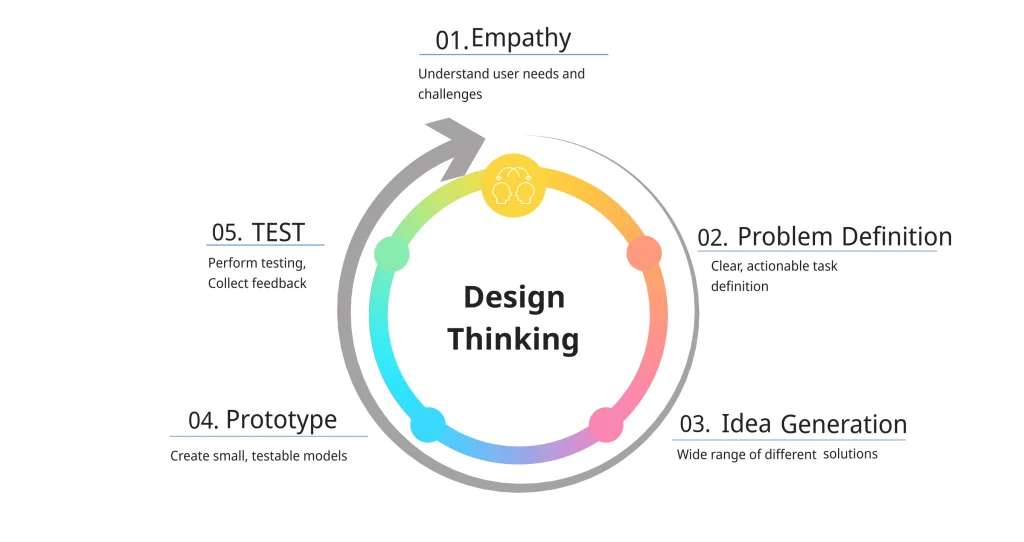We empathize with our customers' concerns and goals, and develop our ideas and actions based on that understanding.
When building an IT system, it is important first to understand the customer’s business and operations, and we incorporate “design thinking” as a method for this purpose. Learn more about our development process here .

Our projects begin with design thinking: empathizing with our customers' concerns and dreams.
1. Understand your users’ fundamental needs
Through empathy, we deeply understand our customers’ emotions, thoughts, cultural backgrounds, motivations, aspirations, and concerns. This allows us to dig deeper into the underlying needs rather than just surface issues.
2. Expand your problem-solving horizons
By empathizing, we are able to think about solutions from a broader perspective, going beyond preconceptions such as the functionality of the customer’s systems and our past experiences. This lays the foundation for creating more practical solutions.
3. Promoting human-centered UI/UX design
By starting from the user’s perspective, empathy creates true value for daily work and business by offering simple, easy-to-use functions and proposals for advanced automation, without being limited by the general functionality of the system. You will be able to propose solutions.
The value of face-to-face communication
Not all business matters can be easily expressed in words.
For this reason, we emphasize face-to-face communication rather than relying on remote communication.
As the saying goes, “Seeing is believing,” and we believe that by communicating on-site and on-site, we can understand more than just text-based communication and be able to execute projects smoothly.
“Empathy” is the beginning of a project, and is an important factor from subsequent development to the operational period.
We strive to get into our customers’ operations and business, build relationships of trust so that they feel like we are the customer’s systems department, and share their thoughts and feelings with them.

Once we deepen our understanding of our customers through design thinking and have a clear idea for a specific solution, we move on to the Lean Startup process and clarify the system functions to be developed while repeating proof-of-concept experiments using prototypes.